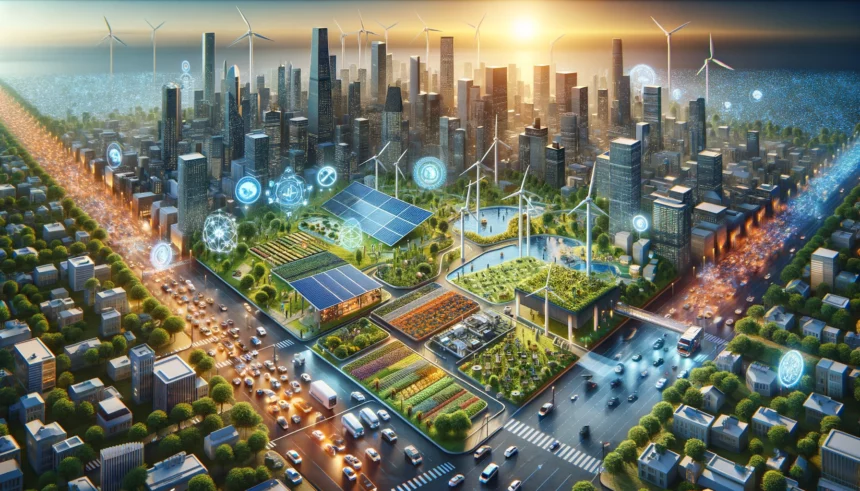Key Points
- Heatwaves are intensifying, posing serious health and environmental risks.
- Traditional cooling methods, like air conditioning, are not sustainable.
- Innovative technologies such as renewable energy, electric vehicles, climate-smart agriculture, green hydrogen, carbon capture, and digital solutions offer sustainable alternatives.
- Adoption challenges include high costs and regulatory hurdles.
- Collaboration and incentives are essential to overcome these challenges and promote sustainable solutions.
Understanding the Growing Heatwave Challenge
Heatwaves are becoming more intense and frequent, especially in cities like Delhi, India. With temperatures soaring to record highs, reaching up to 52.9°C (127.2°F), these extreme conditions pose serious health risks, such as heat strokes and dehydration. Additionally, they exacerbate environmental issues like air pollution and water scarcity.
The Limitations of Traditional Cooling Methods
While air conditioning has been a common solution to combat heat, it is not sustainable in the long run. Air conditioners consume a lot of energy, leading to higher electricity usage and more greenhouse gas emissions. Moreover, their widespread use can overload power grids, causing blackouts during peak times. This creates a paradox where cooling solutions contribute to global warming, creating a vicious cycle.
Innovative Climate Technologies: A Glimpse into the Future
To address the challenges of rising temperatures sustainably, innovative climate technologies are emerging. These technologies focus on reducing urban temperatures in more eco-friendly and energy-efficient ways.
Renewable Energy-Based Technologies
- Solar Power: Initiatives like India’s National Solar Mission aim to achieve 100 GW of solar power capacity. Investing in solar energy helps reduce carbon emissions and ensures energy security.
- Wind and Hydropower: These renewable sources provide sustainable alternatives to fossil fuels, further cutting down greenhouse gas emissions.
Electric Vehicles (EVs)
- Reduction of Emissions: EVs are crucial in reducing emissions from the transportation sector, a major contributor to air pollution. Policies like the Faster Adoption and Manufacturing of Electric Vehicles (FAME) scheme support the growth of India’s EV market.
- Improved Air Quality: Increased adoption of EVs can significantly reduce urban air pollution and enhance energy efficiency.
Climate-Smart Agriculture
- Precision Farming: This method uses data analytics to improve crop yields and resource efficiency.
- Drought-Resistant Crops: Developing and using crops that can withstand extreme weather conditions helps secure food supplies and sustain rural livelihoods.
Green Hydrogen
- Clean Fuel Alternative: Produced using renewable energy, green hydrogen can decarbonize hard-to-electrify sectors like heavy industry.
- National Hydrogen Energy Mission: India’s focus on boosting green hydrogen production positions it as a leader in this transformative technology.
Carbon Capture and Storage (CCS)
- Emission Reduction: CCS technologies capture carbon dioxide emissions from industrial processes, preventing them from entering the atmosphere. This is vital for reducing emissions from existing fossil fuel infrastructure.
Digital Technologies
- Smart Grids: These optimize energy distribution and reduce losses.
- IoT and AI: These technologies enhance climate adaptation and mitigation efforts through better monitoring and management of natural resources.
Broader Impacts and Challenges
Beyond cooling, these innovative technologies help reduce greenhouse gas emissions, conserve energy, and improve urban resilience against heatwaves. They also contribute to creating more comfortable and livable urban environments.
However, the adoption of these technologies faces challenges, including high upfront costs, lack of awareness, and regulatory hurdles. Overcoming these barriers requires collaboration among policymakers, urban planners, and the private sector. Incentives like subsidies, tax breaks, and public-private partnerships can encourage investment and adoption.
Moving Forward
As cities around the world continue to face rising temperatures, innovative climate technologies offer a promising path forward. By embracing sustainable solutions, we can create cooler, healthier, and more resilient urban environments. This journey involves leveraging technological advancements and rethinking our approach to urban planning and development to prioritize sustainability.
















